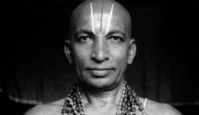Ayurvedic Yoga Massage Training Course in Paris / Apr-May 2024 Last Few Tickets
ConfirmedParis - France
4 rue Titon, 75011 Paris



A vinyasa links 2 asanas together though the breath and a series of flowing movements. A vinyasa is basically comprised of 5 mouvements:
During the practice of the primary serie, an ashtangi will practice over 40 vinyasas that ensure the transition in between the yogasanas of a serie (see the asanas of the Primary and Secondary and secondary series)
The practice of Vinyasa aims to engage Ujjayi breathing – a breathing technique that slightly contract the throat, while breathing through your nose. it also involves using Bandha (e.g.: Uddiyana bandha, Mula bandha) – an inner lock obtained by contracting an internal belt; and focusing on Drishti – a focal point (e.g.: nose, navel, toes) which allows you to keep your gaze in the desired direction.
Vinyasa strengthen the back, arms and legs; they mainly engage the posterior, but also the anterior chain of the body. It gives flexibility to the spine, shoulders and the back of the legs. Vinyasa realigns the body after a pose and to prepare for the next one. Vinyasa initiated and smoothes the breath.
Worldwide workshops
Paris - France
4 rue Titon, 75011 Paris
Paris - France
4 rue Titon, 75011 Paris
Ballybunion - Ireland
County Kerry, V31 DA34, Ireland
Provence - France
Simiane-la-Rotonde, 04150, France
Barcelona (Wellco) - Spain
C/ de Pere IV, 29, 6, 2, Sant Martí, 08018 Barcelona, Spain
Paris - France
4 rue Titon, 75011 Paris
Paris - France
4 rue Titon, 75011 Paris
Mysore - India
Mysore 570002, Karnataka
Mandrem Beach – India
Mandrem, Goa 403527
Mysore - India
Mysore 570002, Karnataka
Mysore - India
Mysore 570002, Karnataka
Paris - France
4 rue Titon, 75011 Paris
Provence - France
Simiane-la-Rotonde, 04150, France
Discover the massage therapy for the yogi(ni)